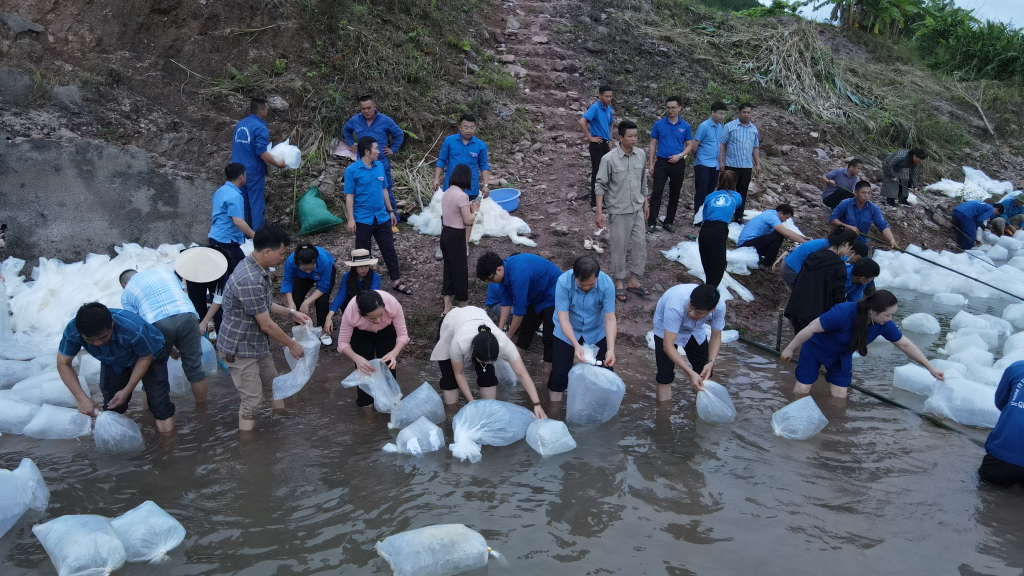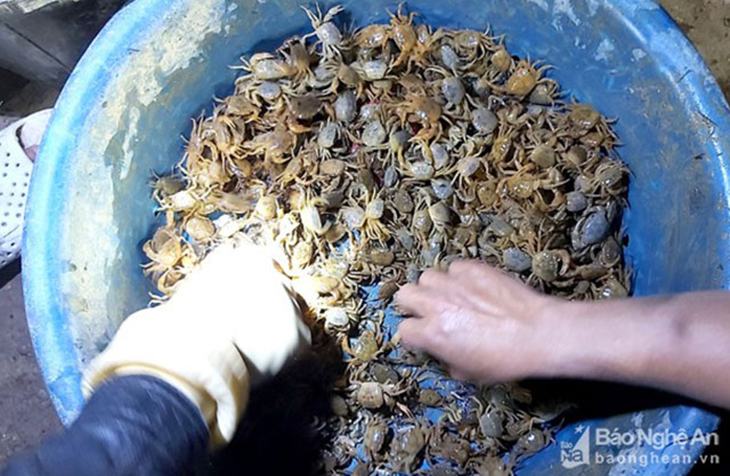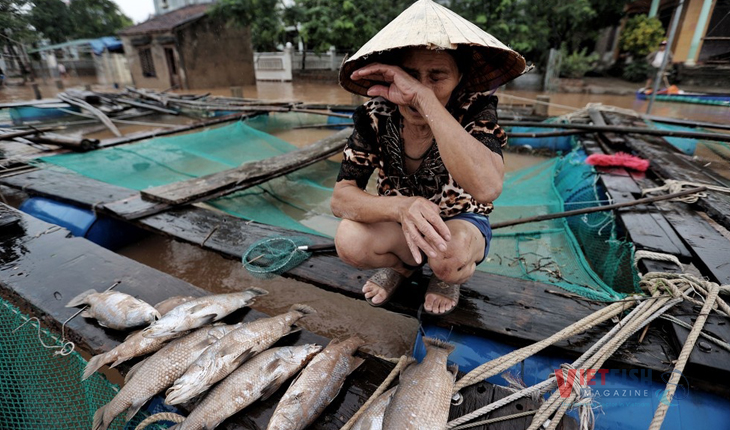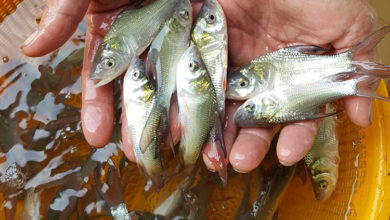Yen Bai to release thousands of tons of fingerlings annually into Thac Ba lake
Each year, Yen Bai plans to release thousands of tons of fish fingerlings into Thac Ba Lake, alongside providing fishing gear and ensuring product procurement to facilitate controlled exploitation by local residents.
Thac Ba Lake, one of Vietnam’s three largest man-made lakes, resembles a “miniature ocean” in Yen Bai province. It spans an area of 23,400 hectares, including 19,050 hectares of water surface. The lake stretches 80 kilometers in length, up to 30 kilometers in width, with water levels ranging between 46–58 meters and a storage capacity of 3–3.9 billion cubic meters. This vast water body presents a significant advantage for local tourism development. Furthermore, the lake is considered a rich potential aquaculture hub, boasting abundant and stable water quality, ideal for cultivating freshwater species like
With its clean and expansive water resources, Thac Ba Lake offers opportunities for locals to develop fish farming while providing a solid foundation for businesses to invest in high-tech aquaculture models, such as cage and pen farming. Due to minimal pollution, aquatic products from the lake meet quality and food safety standards, opening export opportunities for fish products.

Currently, Thac Ba Lake is home to several aquaculture enterprises, cooperatives, and over 300 households engaged in cage and pen fish farming. The lake hosts over 2,200 fish cages and 230 hectares of water surface dedicated to pen aquaculture, yielding an average of 9,000 tons of aquatic products annually. Yen Bai province aims to increase this output to 20,000 tons, while inviting enterprises to establish seafood processing plants in Yen Binh district, targeting exports to markets such as the United States, Japan, Thailand, and African countries.
According to La Tuan Hung, Vice Chairman of the Yen Binh District People’s Committee, the district collaborates annually with the provincial Fisheries Sub-Department to replenish aquatic resources in the lake, aiming to diversify fish species and maintain ecological balance. These efforts also provide sustainable livelihoods for locals engaged in legal aquaculture and fishing, increasing their incomes.
On December 12, the Yen Bai Department of Agriculture and Rural Development, in partnership with the Vietnam Aquaculture and Processing Joint Stock Company, released over 8 tons of fingerlings into the lake, including black carp, common carp, mud carp, and bighead carp, each weighing 100–300 grams. This initiative supports raw material development, coupled with sustainable exploitation and market linkage for Thac Ba Lake’s aquaculture products.
Quach Manh Long, Chairman of the Board at the Vietnam Aquaculture and Processing Joint Stock Company, revealed that the company spent nearly two years researching Thac Ba Lake and identified its immense potential for fisheries development and livelihood creation for locals.
Under an approved plan, the company will release around 1,000 tons of fingerlings annually in Thac Ba Lake in the coming years. This program ensures shared benefits: locals safeguard aquatic resources, while the company invests in fingerling release, provides fishing equipment, and guarantees product procurement.
Surveys of Thac Ba Lake’s output—9,000 tons of fish annually—indicate that the company plans to allocate approximately VND 30 billion each year to support livelihoods for 500–600 fishing households. The program’s primary goal is to transition residents toward sustainable fishing practices, organize them into community groups to manage and protect aquatic resources, and eliminate destructive fishing methods such as small-mesh nets, light traps, and electric or chemical-based equipment.
Long also urged Yen Bai authorities to collaborate closely with the company to strictly regulate illegal fishing gear, thereby creating jobs, improving livelihoods, and enhancing local living standards. Within 1–2 years, the company plans to establish a processing facility for export-oriented products in the area.
Nguyen Duc Dien, Deputy Director of the Yen Bai Department of Agriculture and Rural Development, confirmed that the province has approved the company’s plan to release fingerlings into Thac Ba Lake for natural growth, followed by collaboration with locals for sustainable harvesting and product procurement. This initiative will be implemented consistently over several years.
This is the first large-scale fingerling release program by a private enterprise in Thac Ba Lake. It not only delivers economic benefits but also reflects local authorities’ commitment to environmental protection. The program aims to conserve, regenerate, and diversify aquatic resources, enhance fish populations, and restore the lake’s ecosystem while maintaining water quality. Abundant natural fish stocks will ensure a steady food supply for locals and foster economic development in the region.
VFM






